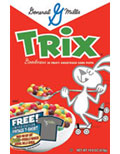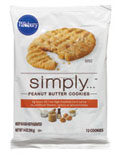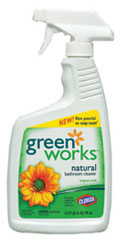Trend-spotting always grabs attention and makes for intriguing reading. But simply citing trends is not enough to make a significant impact on a business or brand. To be really useful, trends must be well understood, appropriately contextualized and, once applied, confirmed as being effective.
But it’s also important to recognize the potential pitfalls, to gauge the right balance in applying trends and, most importantly, to be sure you don’t go too far in adopting them.
At PRS Research, we conduct some 700 packaging-related research studies every year, giving us a preview of where design is heading before it is obvious to the world at large.
In some cases, trends are applied wisely and brands benefit greatly, being seen as leading edge as a result. Other times, the effort seems forced or not well executed, leaving a worse impression than if no attempt had been made.
Broad trends in the economy, the environment, technology and fast-paced lifestyles have been covered extensively elsewhere. Instead, I’ll discuss the most prominent package design trends that we’ve seen emerging from these larger societal shifts, and point out their potential opportunities and pitfalls.

NOSTALGIA
While not a new concept, the idea of nostalgia is picking up steam in these times of angst, turmoil, uncertainty and change. It can be comforting to hearken back to a simpler time (or what is now considered to have been a simpler time), and that’s evident in the popularity of “retro” styles of clothing, furniture, restaurants and music. In fashion we see the lure of nostalgia fueling the resurgence of Fedora hats and the tenacious ubiquity of Converse Chuck Taylor sneakers. Nickelodeon capitalized on this idea with its popular Nick at Night cable channel and now there’s the TV Land network, where baby boomers can enjoy their favorite childhood TV programs. More recently, AMC’s Mad Men television series, set in the 1960s along Madison Avenue, provided another example.
THE PITFALL:So how can you go wrong with nostalgia? Well, the danger is that the brand could be seen as boring or outdated and too caught up in looking backward, not innovating with an eye toward the future.

SIMPLICITY
It is often said that “simpler is better” and, lately, simplicity has been gaining a much broader presence in package design and in product concepts overall. Consider how the trend has been applied to product ingredients: whether it’s fewer ingredients or ones that are more natural, organic or, by being lower in fat or preservative free, healthier in some way.Examples of brands capitalizing on this trend include the Simply line of refrigerated, ready-to-bake cookies from Pillsbury, and Green Way, the organic line from The Great Atlantic & Pacific Tea Company (the company that owns the A&P grocery chain).
Interestingly, many consumers have little understanding of what really constitutes organic or all natural (and often confuse these characteristics). Nor do they fully grasp the implications of adopting these approaches (such as limited shelf-life, the potential for compromised taste or higher cost). Yet, they clamor for these products with almost religious zeal, and package design is playing a big role in creating that allure.
THE PITFALL: The challenge of simplicity, though, is getting it right. Stark, simple packaging that is fitting for the message of “pure” and “wholesome” can also be perceived as cheap or generic.
SMALL INDULGENCES
With a need to cut back on large purchases-homes, cars, vacations, jewelry and the like-consumers are now turning to premium indulgences to feel good. These include high-end versions of chocolate, ice cream and coffee that may be expensive for their respective product categories but, nevertheless, are a relatively modest expenditure for the shopper.Consumers seem to be enjoying such indulgences as a reward for hard work, a diversion from current financial woes, or just a confidence boost when they need to feel “worth it.”
THE PITFALL: Before diving into the small indulgence trend, a brand should consider how “special treats” may be too special and not provide a sufficient base of business to be viable. In addition, the more premium packaging with layers of material, much of it rather exotic looking, may be perceived as wasteful.
MAKING A STATEMENT
Consumers sometimes make purchase decisions based, in part, on a connection the product makes with a social issue the consumer cares about. These products might comply with Fair Trade practices (benefitting producers in developing countries), make donations to causes such as cancer research, education, or community services, or use packaging that, in some way, benefits the environment.One of the most notable and successful examples of tapping into the “cause marketing” trend was the Campbell Soup Co.’s release of limited-edition pink ribbon soup cans that promoted breast cancer awareness and donated a portion of sales to the Susan G. Komen Foundation. Consumers were so strongly in favor of this move that Campbell’s sales doubled during that time.
Another good example comes from Coca-Cola, which just made a big sustainability move by announcing that its new “PlantBottle” (made from sugarcane and molasses derivatives) will debut at the 2010 Winter Olympics in Vancouver.
THE PITFALL: The cautionary tale of taking a stand is proving that it’s an authentic move. There is a risk of backlash if the effort is seen as preachy, self-serving, or false (“green washing” in the case of a weak or misleading sustainability effort), and a potential turnoff to someone not in favor of supporting the specific cause.

SO, WHAT'S A MARKETER TO DO?
Generally speaking, there are three guidelines that will help safely incorporate trends into the brand marketing mix.1. First, you need to make sure trends are real. These days, it’s all too easy to obtain “information.” There’s more data coming at most of us than we can easily make sense of. That being the case, anecdotal mentions of a random attitude or behavior may get overblown into what a marketer falsely believes to be a meaningful movement.
For example, the mass media decried the death of civility as a “trend” after a politician shouted during President Obama’s healthcare speech, Serena Williams cursed at a line judge and Kanye West grabbed Taylor Swift’s microphone at the MTV Music Awards, all in the same week. But is it a trend, really?
It’s essential to have credible data about a sustained interest in a movement among your target market before investing your brand’s resources and risking its reputation. To properly assess a trend among a meaningful sample, you must ask the right questions and also ask them the right way.
For instance, when asked directly, very few consumers would say they don’t think it’s important to raise money for breast cancer research, or use packaging that is less harmful to the environment. That’s why it’s critical to frame the question in a shopping context that includes all of the variables that could influence their tendency to purchase (e.g. price, durability, product satisfaction, etc).
2. The next step in tapping trends is determining how best to apply them to your brand.
“Participating” would be one approach, consisting of a short-term promotion such as contributing a portion of sales to a cause. Such an effort enables the brand to benefit from an association with the trend in a way that presents relatively little risk to its reputation. Of course, this approach is also limited in its ability to evolve the brand’s long-term image and presence.
However, by not over-committing, the brand remains flexible in its ability to participate in other trends and activities. It also minimizes the possibility that the brand will dilute its core essence or that a significant part of its user base will be permanently turned off by this association.
A more significant commitment to a trend would be achieved by “extending” the brand with a permanent entry introduced into the marketplace that addresses the trend but keeps the base business intact (and secure). Examples of this approach include Clorox’s Greenworks eco-friendly line of household cleaners, and Haagen-Dazs’ Five line of ice cream (just five ingredients). In each case, the new line overtly addresses a trend and goes beyond a short-term promotional gesture, thereby reaping more rewards if the trend really takes hold. However, if the trend turns out to be short-lived or less meaningful than originally thought, then the company will not have risked the survival of the base business.
The most dramatic way to apply trends to a brand is when they are so compelling that the old way of doing things is no longer feasible, and the brand is “transformed.” An example is Western Union discontinuing its telegram business in light of e-mail and other emerging communication technologies.
Rather than completely reinvent an existing brand, the most significant level of commitment to a trend is realized more typically through new product (and brand) development, such as the entirely new lines of Café Fair Coffee or the EcoSmart line of environmentally safe pesticides.
There is an obvious trade-off in choosing between these strategies. The best option will depend on how sustainable you believe the trend is, how well it fits with your brand’s essence, whether your brand is thriving or declining, and how this trend is likely to impact that status going forward.

Online research or focus groups can confirm that messages are being communicated properly and brand imagery is being enhanced. But it’s also important to determine how the shopper will react to this offering in the context of a realistic shelf display that includes competitive products, pricing and merchandising variables. Specifically, you must determine if the package is:
SEEN: If a lighter color palette conveys the right association with a more natural image, but the package is too recessive on shelf, then the shopper will not have a chance to buy it (unseen is unsold).
UNDERSTOOD:If shoppers are confused about what they’re seeing (is it still my brand, what’s the benefit of this one, will it taste as good/perform as well, am I paying more), they may resort to a competitive offering.
COMPELLING:Even if seen on shelf and clearly understood, the proposition must be sufficiently meaningful - amidst all of the other options available - to actually be purchased. Simply hearing people pay lip service to how wonderful the idea is can be dangerously misleading.
Capitalizing on the latest trends offers brands the chance to stay relevant and build incremental sales. But it is important not to overreact to trends. Know that the trend is meaningful and your approach is effective. Anything less will risk turning your brand into a passing fad.
Jonathan Asher is senior vice president with Perception Research Services (www.prsresearch.com), a company that conducts more than 700 consumer research studies annually to help marketers develop, assess and improve packaging systems. Reach Jonathan at jasher@prsresearch.com.
